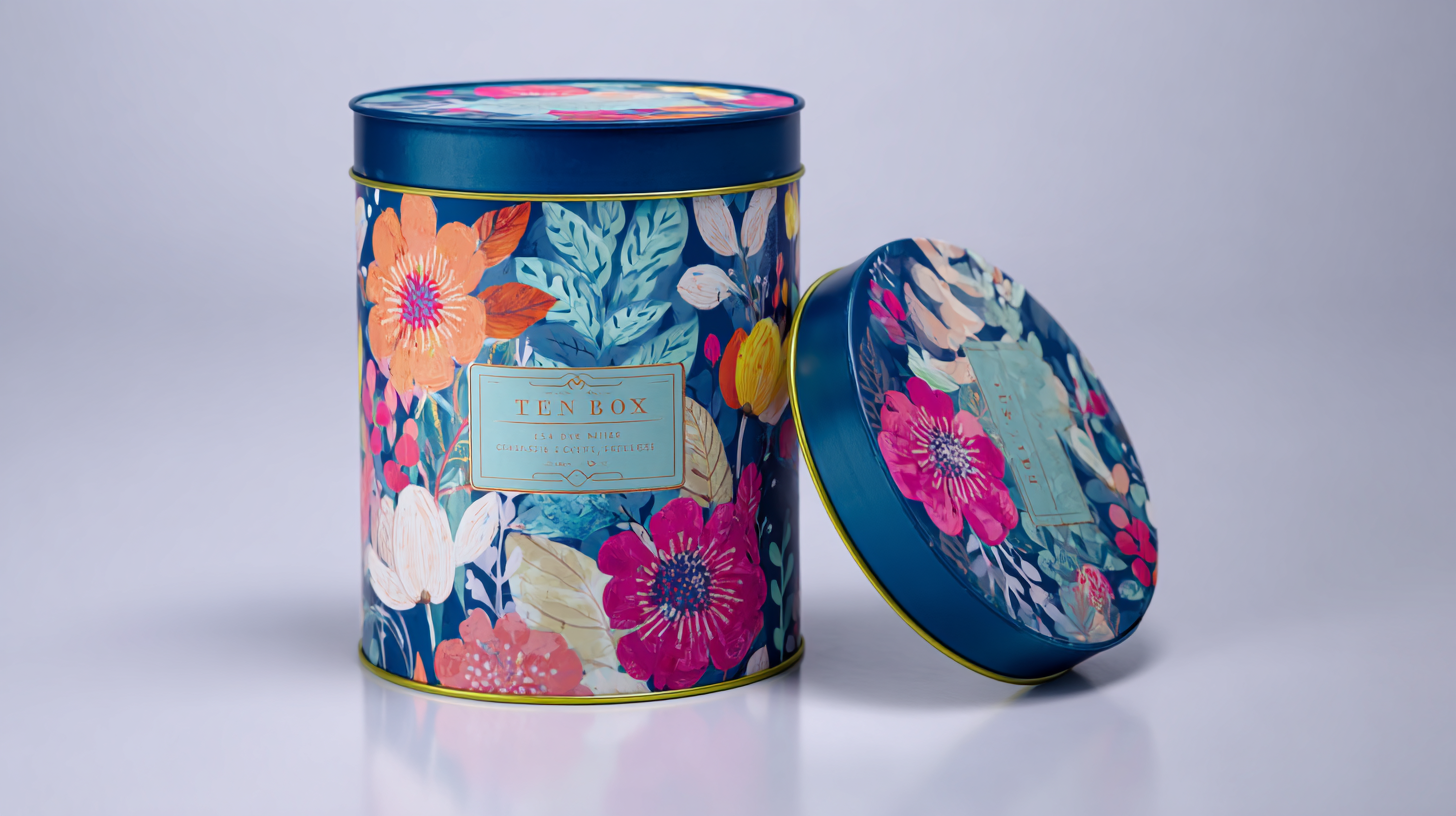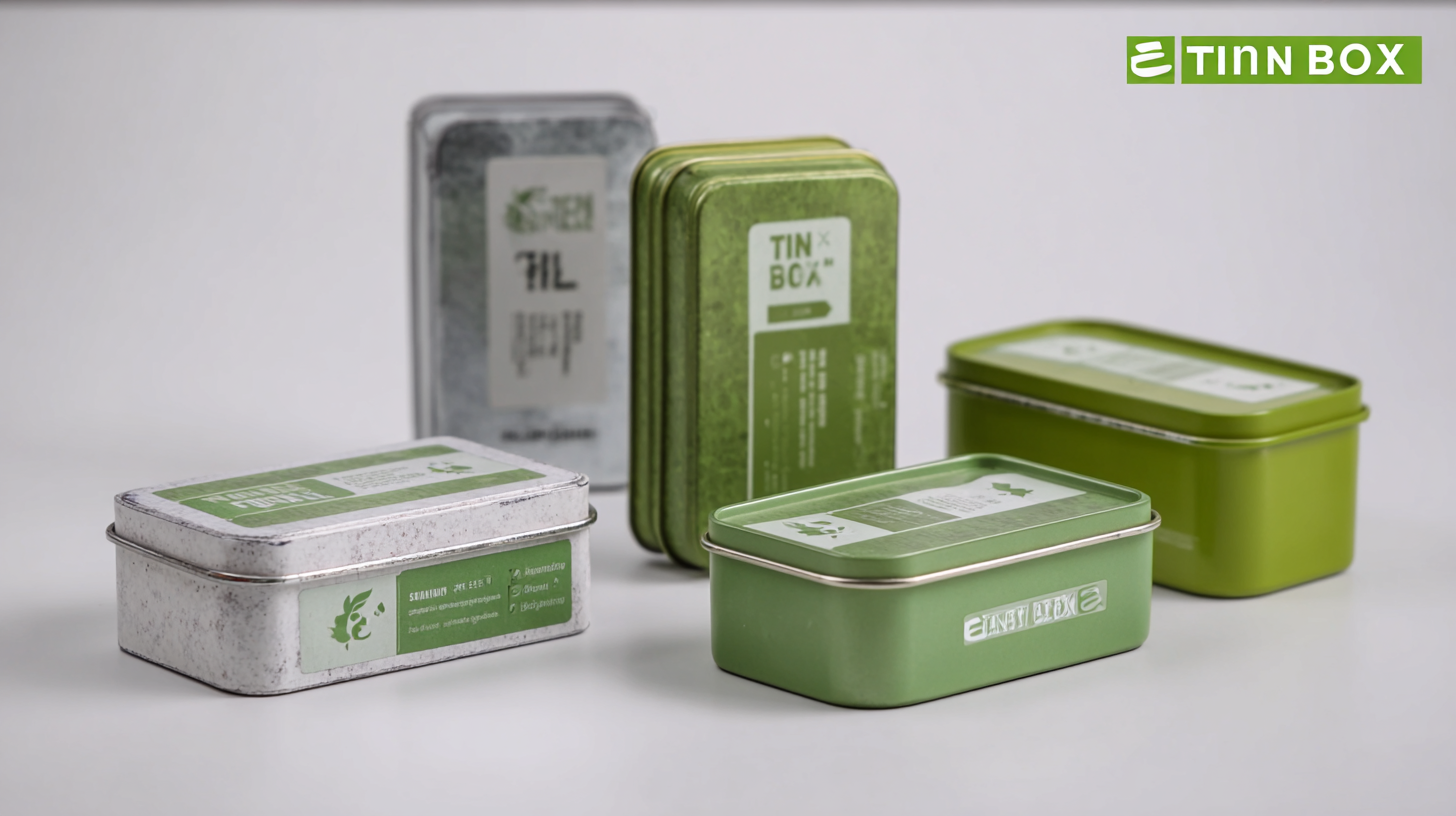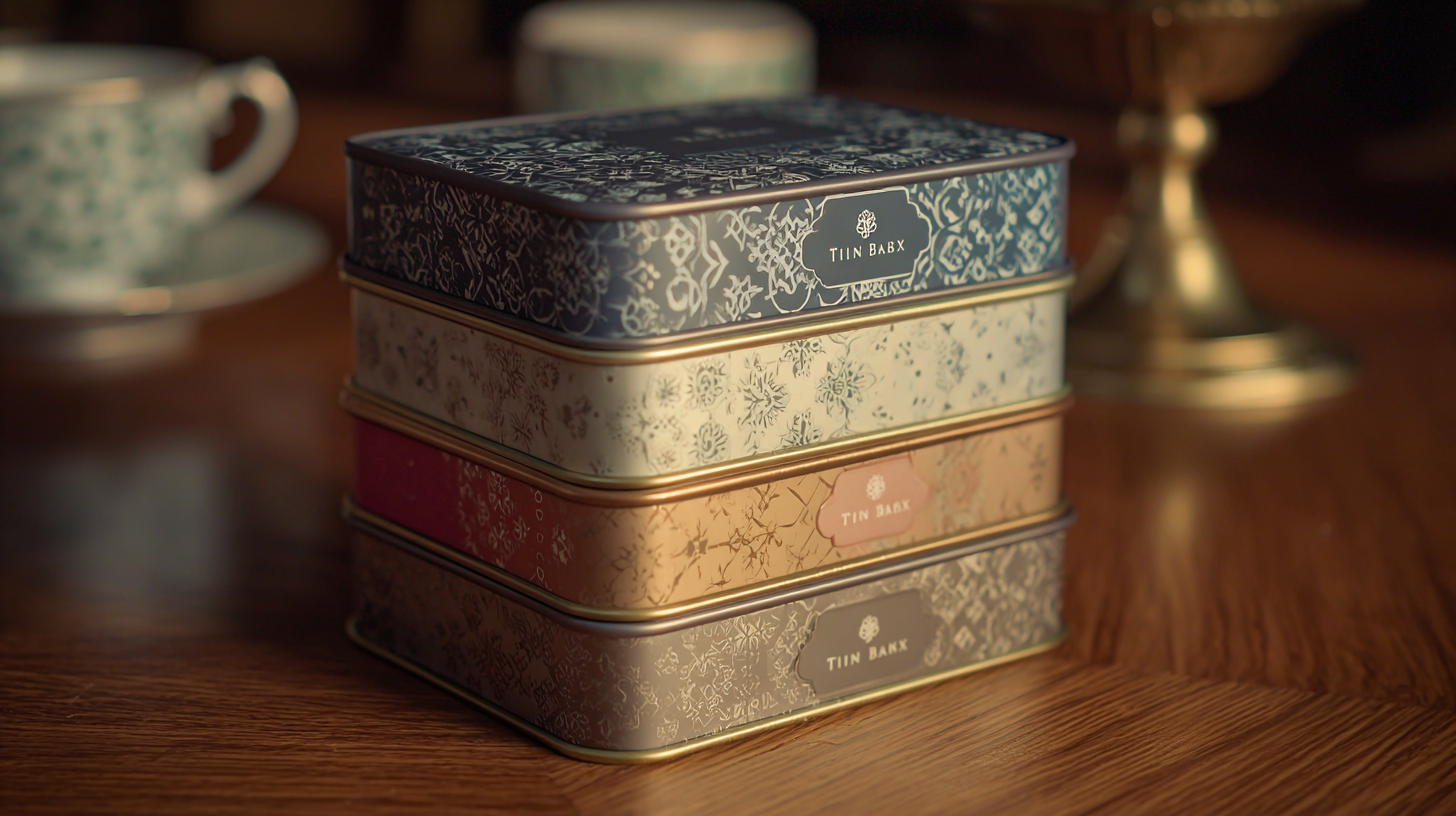 +817089618688
+817089618688
Free Standard Samples can be provided for you to check the quality.
Leave Your Message
As the global demand for sustainable packaging solutions continues to rise, the focus on eco-friendly materials and production processes has never been more critical. According to a recent report by Grand View Research, the sustainable packaging market is expected to reach $1.2 trillion by 2027, reflecting a compound annual growth rate (CAGR) of 6.7% from 2020.
 Among the various packaging options, tin boxes have emerged as a popular choice due to their recyclability and durability, making them an ideal candidate for brands looking to enhance their environmental responsibility. To thrive in this evolving market, companies must not only seek high-quality suppliers that prioritize sustainability but also implement top strategies tailored to eco-friendly practices.
This blog will explore how to identify reputable suppliers while highlighting effective strategies for leveraging tin box packaging in the eco-conscious landscape of 2025.
Among the various packaging options, tin boxes have emerged as a popular choice due to their recyclability and durability, making them an ideal candidate for brands looking to enhance their environmental responsibility. To thrive in this evolving market, companies must not only seek high-quality suppliers that prioritize sustainability but also implement top strategies tailored to eco-friendly practices.
This blog will explore how to identify reputable suppliers while highlighting effective strategies for leveraging tin box packaging in the eco-conscious landscape of 2025.
Emerging trends in eco-friendly packaging are extensively reshaping the landscape of tin box packaging in 2025. With sustainable practices becoming an urgent priority, companies are innovating by incorporating biodegradable and recyclable materials into their packaging solutions. According to a recent report by Grand View Research, the global green packaging market is expected to reach $500 billion by 2027, growing at a CAGR of approximately 5.7%. This surge is primarily driven by increasing consumer demand for sustainable products and stricter regulations on plastic use.
In particular, plant-based bioplastics and recycled tin materials are gaining traction in the industry. For instance, the use of post-consumer recycled (PCR) tin can reduce carbon footprints significantly. A study published by the Sustainable Packaging Coalition indicated that PCR materials can lower greenhouse gas emissions by up to 30% compared to products made from virgin materials. As companies strive to meet consumer expectations for eco-friendly packaging, these materials not only enhance brand reputation but also align with global sustainability goals, making them integral to the future of tin box packaging.
As the demand for sustainable packaging solutions grows, the role of biodegradable liners in tin box production is becoming increasingly significant. These eco-friendly liners not only enhance the recyclability of the packaging but also reduce the reliance on traditional plastic materials. Biodegradable liners made from plant-based sources break down naturally, offering a solution that aligns with environmental stewardship and consumer preferences for greener options.

When considering the best practices for incorporating biodegradable liners, manufacturers should focus on sourcing materials that are certified compostable. This ensures that the liners decompose effectively without leaving harmful residues. Companies can also explore innovative designs that maximize the use of natural materials while maintaining the structural integrity of the tin box.
Another crucial tip is to educate consumers about the benefits of biodegradable liners. Clear labeling and informative packaging can help raise awareness about how these liners contribute to reducing waste. By engaging customers and promoting sustainable practices, businesses can build a loyal customer base that values environmentally friendly products and practices.
 Innovative design trends are reshaping the landscape of
eco-friendly packaging, particularly in the realm of tin boxes. As consumers
increasingly prioritize sustainability, designers are focusing on creating packaging that not only protects the product but also
leaves a minimal carbon footprint. One notable trend is the use of biodegradable inks
and water-based adhesives, which align with the eco-conscious values of modern consumers.
This move away from traditional petroleum-based products reduces environmental impact, making the entire packaging process
more sustainable.
Innovative design trends are reshaping the landscape of
eco-friendly packaging, particularly in the realm of tin boxes. As consumers
increasingly prioritize sustainability, designers are focusing on creating packaging that not only protects the product but also
leaves a minimal carbon footprint. One notable trend is the use of biodegradable inks
and water-based adhesives, which align with the eco-conscious values of modern consumers.
This move away from traditional petroleum-based products reduces environmental impact, making the entire packaging process
more sustainable.
Another emerging trend is the incorporation of minimalist design aesthetics.
Clean lines and simple graphics not only convey a sense of elegance but also emphasize the product's eco-friendly credentials.
By utilizing a less is more approach, brands can communicate their commitment to
sustainability while appealing to a market that appreciates simplicity and functionality. Additionally, reusable and refillable tin box designs are gaining traction,
encouraging consumers to use packaging well beyond its initial purpose, thus promoting a circular economy.
As we move into 2025, these innovative design trends will undoubtedly play a pivotal role
in defining the future of eco-friendly packaging in the tin box sector.
As we approach 2025, consumer preferences are increasingly shaping the landscape of eco-friendly packaging, particularly for products housed in tin boxes. A growing awareness of environmental issues has prompted consumers to prioritize sustainable materials and practices in their purchasing decisions. This shift is not merely a trend but a reflection of a fundamental change in consumer values, where the ecological impact of packaging plays a pivotal role in brand loyalty and purchasing behavior.
Consumers are favoring packaging solutions that minimize waste and utilize recyclable or biodegradable materials. Tin boxes, with their durability and recyclability, align well with this preference. Brands that innovate with eco-friendly tin box designs find themselves at an advantage, as they resonate with the conscious consumer who seeks to support companies that demonstrate environmental responsibility. From minimalist designs to the use of water-based inks and sustainable coatings, the trends indicate a significant movement towards packaging that not only protects the product but also reflects a commitment to sustainability. This evolving landscape suggests that businesses must stay attuned to consumer demands for greener options to thrive in the competitive market of 2025.
The landscape of eco-friendly packaging within the tin industry is undergoing significant transformation due to evolving regulatory changes. Governments around the world are becoming increasingly aware of the environmental impact created by traditional packaging materials. Legislative bodies are now implementing stricter regulations aimed at reducing waste and promoting sustainable materials. As these policies take effect, companies within the tin industry must adapt their packaging practices to meet new compliance standards, encouraging the use of recyclable and biodegradable materials.
These regulatory shifts not only compel tin manufacturers to rethink their packaging strategies but also create opportunities for innovation. Companies that embrace eco-friendly practices stand to gain a competitive edge as consumers are becoming more conscious of their purchasing choices. By adhering to new regulations, businesses can enhance their brand image, appealing to environmentally aware customers looking for sustainable options. As the industry progresses towards 2025, the integration of sustainable materials and practices will be crucial, aligning business success with environmental responsibility.
